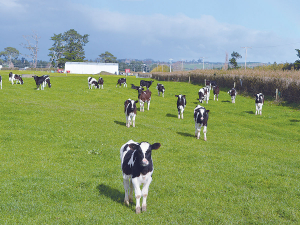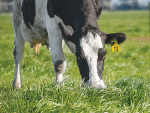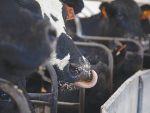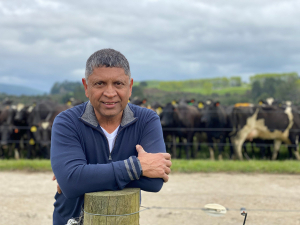- Calves are born with very low immunity and need colostrum to absorb antibodies (immune molecules) across their guts into their bloodstreams.
- FPT leads to more calf disease and death.
- A third of calves in NZ have FPT and the range on farms is 5%-80%.
- FPT may also cause poor milk production and poor reproductive performance when FPT heifers reach the herd.
- Rearing healthy calves is important; they are the future of your herd.
When is a calf more likely to get FPT?
- FPT is the result of poor colostrum feeding; not quickly enough, not good enough quality, not enough volume.
- Older cows are more likely to have calves with FPT.
- There is more FPT during the peak of calving.
- South Island has a higher prevalence of FPT.
- Weak, sick calves at pick up are more likely to have FPT.
- Herds over 400 are more likely to have a higher prevalence of FPT.
Colostrum testing
- Colostrum is the first milking colostrum. Everything else until the cow goes into the vat is transition milk.
- Know the quality of your colostrum.
- Bacterial contamination and low immunoglobulin G (IgG) concentrations lead to poor quality colostrum and calves with low immunity.
- The method of giving colostrum is only as good as the quality of colostrum given.
- Estimate the IgG concentration in your colostrum using a BRIX refractometer (over 22% is good quality).
- Reduce bacterial contamination of colostrum by careful cleaning of storage and feeding equipment.
Preserving colostrum quality
Take home tips
- Colostrum goes off!
- If you wouldn’t drink it don’t feed it to your calves!
- Store colostrum in a lidded drum and stir it regularly.
- Keep it cool – refrigerated if possible at 4⁰C.
- Use an approved preservative like potassium sorbate (1%) to preserve IgG concentration and prevent bacterial proliferation.
Timing and volume of colostrum feeding: When you know you are feeding good quality colostrum, the next things to consider are when to feed it and how much to feed.
Take home tips
- Feed 10-15% of the calf’s bodyweight in colostrum within the first 6-12 hours of life – this is the ‘Golden Period’. For a 40kg calf this is 4-6 litres of colostrum.
- Limited calf stomach (abomasal) capacity means you will need to split this into at least 2 separate feeds.
- After 24 hours the calf’s gut starts to ‘close off’ and will not absorb any more IgG molecules.
- Colostrum is still an excellent feed after 24 hours of age.
Tubing Colostrum
Take home tips
- Know what you are tubing with! Tubing is only as good as what you are tubing with so get your colostrum quality right.
- Tubing can take the ‘guesswork’ out of knowing how much colostrum a calf has had and is useful for sick calves that won’t drink.
- Gentle tubing is essential.
- Potential problems with ‘oesophageal groove closure’ when tubing calves may mean that colostrum pools in the rumen causing bloat.
- Emma Cuttance of Epivets presented this at a recent Smaller Milkand Supply Herds (SMASH) field day











